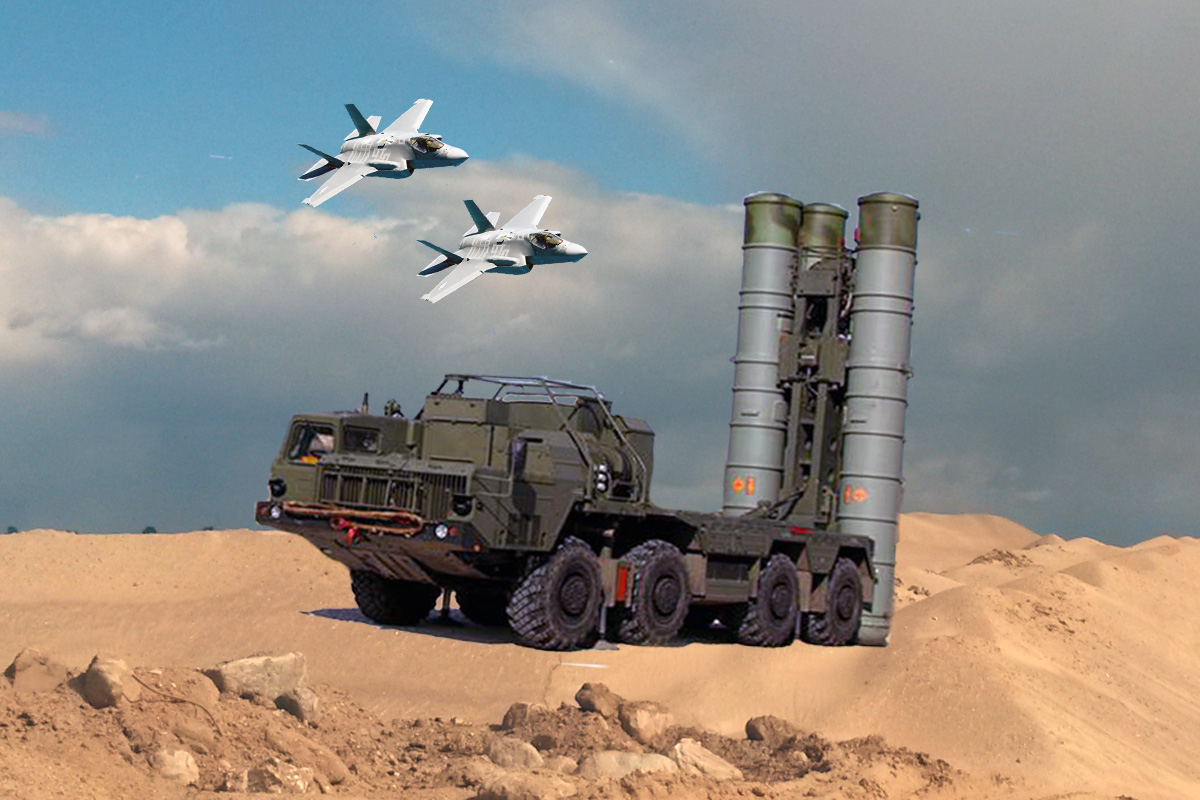SOURCE: AFI


The advent of fifth-generation fighter jets like the F-35 Lightning II has revolutionized modern aerial warfare, challenging traditional air defense systems such as Russia’s S-400. The F-35, with its cutting-edge stealth technology, presents a significant hurdle for systems like the S-400, which are designed to track and engage a wide variety of aerial threats. Understanding the interaction between these technologies is crucial, especially as countries like India and Turkey, both operators of the S-400, navigate complex defense strategies in an era defined by advanced stealth platforms.
The F-35 Lightning II is a multi-role, fifth-generation fighter jet developed by Lockheed Martin for the United States and its allies. Its defining feature is its stealth technology, which allows it to evade detection by radar systems. The aircraft’s design minimizes its radar cross-section (RCS), making it nearly invisible to traditional radar systems. Additionally, it employs advanced electronic warfare (EW) capabilities to jam or confuse enemy radar systems, making it even more difficult to detect and track.
Stealth is at the core of the F-35’s operational strategy, allowing it to penetrate heavily defended airspace, perform precision strikes, and provide air superiority. This capability poses a direct challenge to sophisticated air defense systems like the S-400, which are designed to detect and engage a broad spectrum of aerial targets, including low-observable aircraft.
Russia’s S-400 Triumph is one of the most advanced surface-to-air missile (SAM) systems in the world. It is equipped with multiple radar systems, including the 91N6E radar, which operates across different frequencies to detect and track targets at various ranges. The S-400 is highly regarded for its ability to engage aircraft, drones, and even ballistic missiles at distances of up to 400 km. It is designed to counter a wide range of threats, including stealth aircraft.
Despite its sophistication, the S-400 faces challenges when dealing with fifth-generation fighters like the F-35. The F-35’s stealthy design and advanced EW capabilities complicate the S-400’s ability to consistently detect and track it. The 91N6E radar, while capable of detecting low-observable targets, struggles against the F-35’s reduced RCS and its ability to mask its presence through electronic countermeasures.
The core challenge for the S-400 in tracking the F-35 stems from the nature of stealth technology. The F-35’s design significantly reduces its radar signature, particularly in high-frequency radar bands commonly used by air defense systems. While the S-400 employs a range of radar frequencies to counter stealth, including low-frequency radars, these systems are still limited in their ability to provide precise targeting information against advanced stealth aircraft.
Low-frequency radars may be able to detect the presence of a stealth aircraft like the F-35, but they often lack the resolution to track it accurately or guide a missile to it. In contrast, higher-frequency radars, which are more precise, are more susceptible to the F-35’s stealth features. This mismatch between detection and engagement capabilities presents a significant challenge for the S-400 when facing fifth-generation fighters.
The difficulties in tracking the F-35 with the S-400 have strategic implications for countries that operate either system. Nations like the United States and its allies, which deploy the F-35, rely on the aircraft’s stealth and advanced capabilities to maintain air superiority in contested environments. The F-35’s ability to evade air defense systems like the S-400 enhances its role as a dominant force in modern aerial warfare.
On the other hand, countries operating the S-400, such as Turkey and India, must consider how well their air defence systems can counter potential adversaries equipped with stealth platforms. While the S-400 remains a powerful air defence tool, its limitations against the F-35 underscore the evolving nature of modern warfare, where technological advancements in stealth are outpacing traditional air defence capabilities.
For India, which operates the S-400 and is not part of the F-35 program, there have been concerns that its acquisition of the S-400 could complicate potential access to advanced Western aircraft like the F-35. The presence of the S-400 in India’s defense inventory has raised concerns in the United States about the security of sensitive technologies, particularly in regard to how data from the S-400 could be used to better understand and counter the F-35.
The challenge of tracking stealth aircraft like the F-35 with systems like the S-400 highlights the ongoing arms race between air defense systems and stealth technology. As countries invest in advanced air defense systems, they must also consider the limitations of existing platforms when faced with next-generation stealth aircraft.